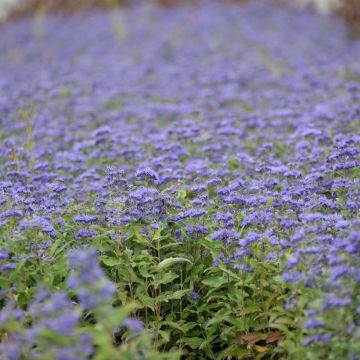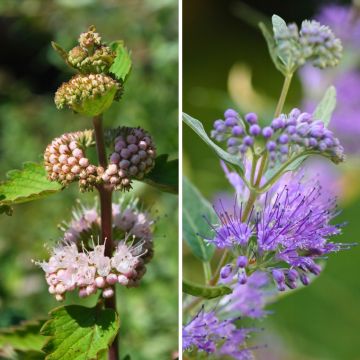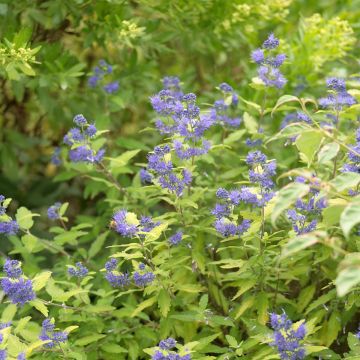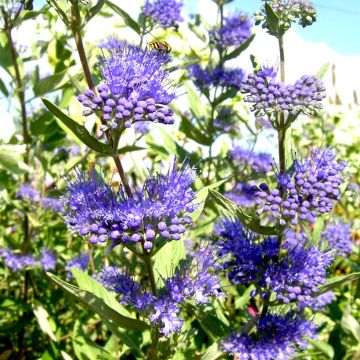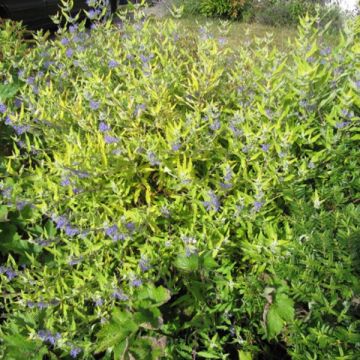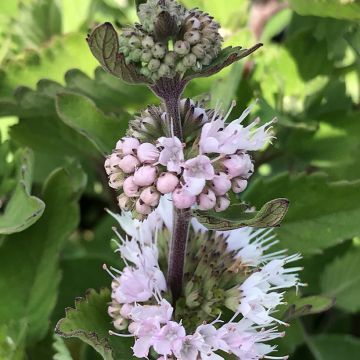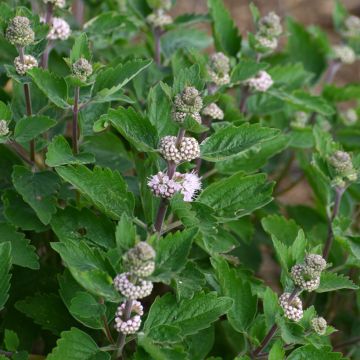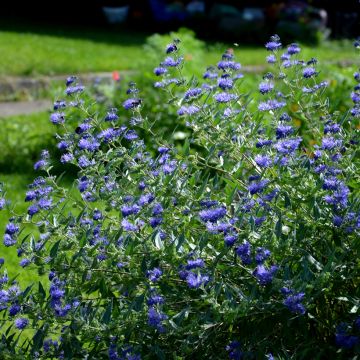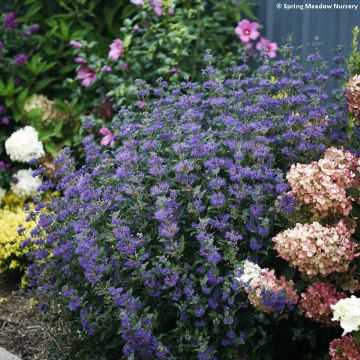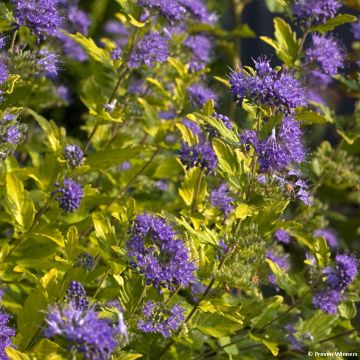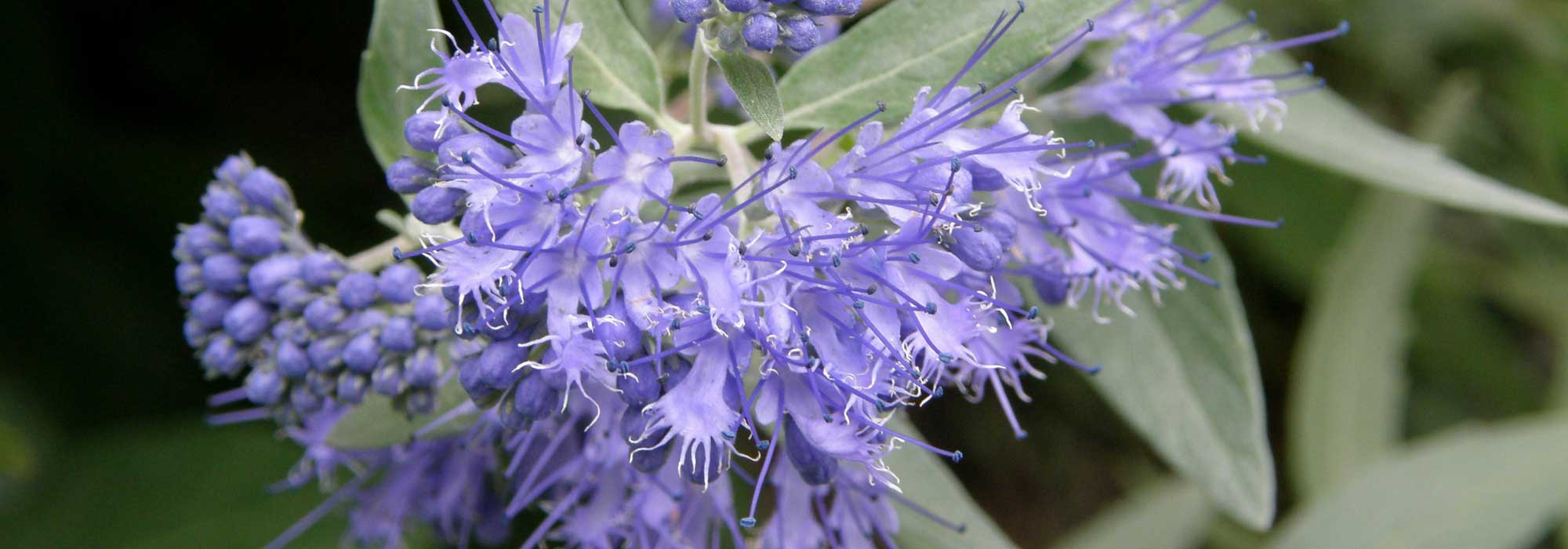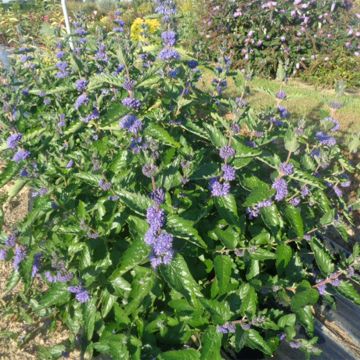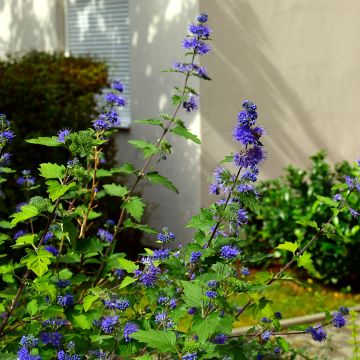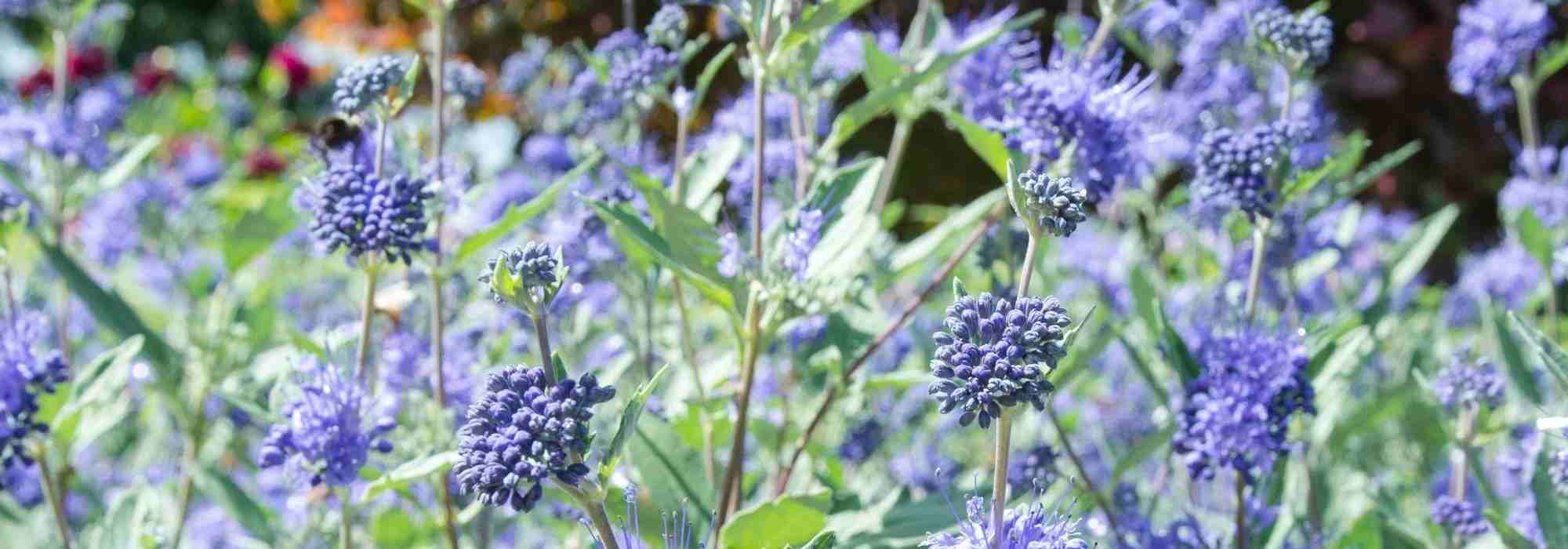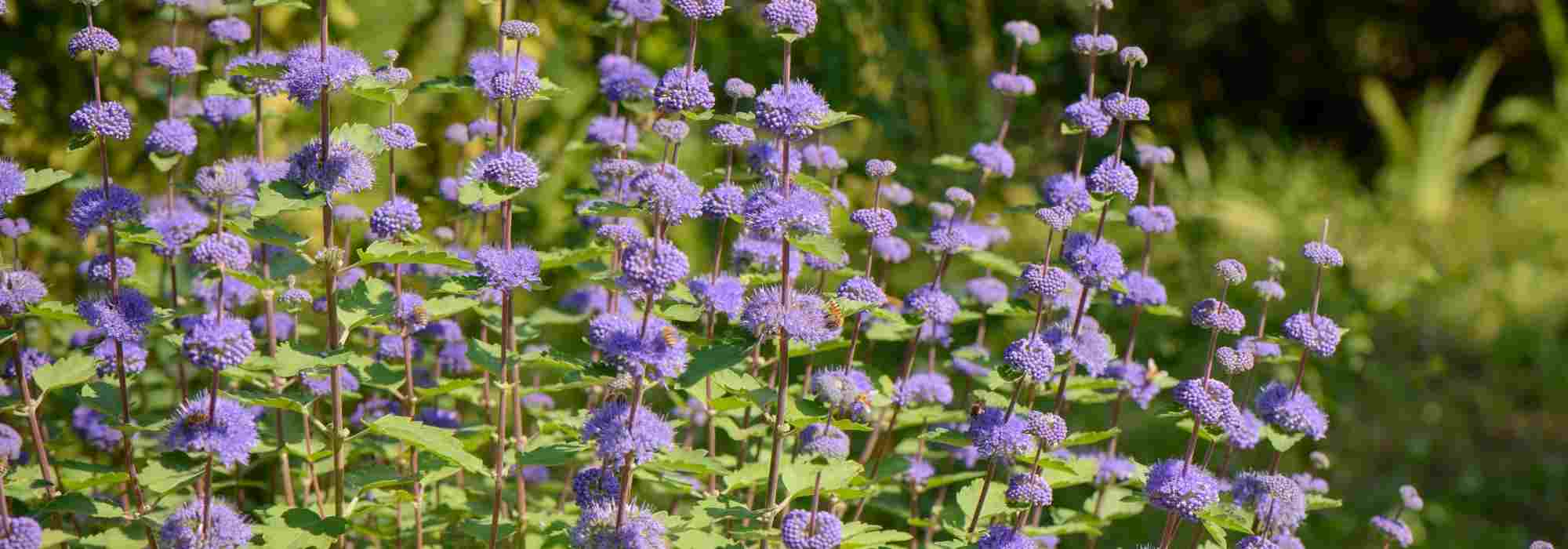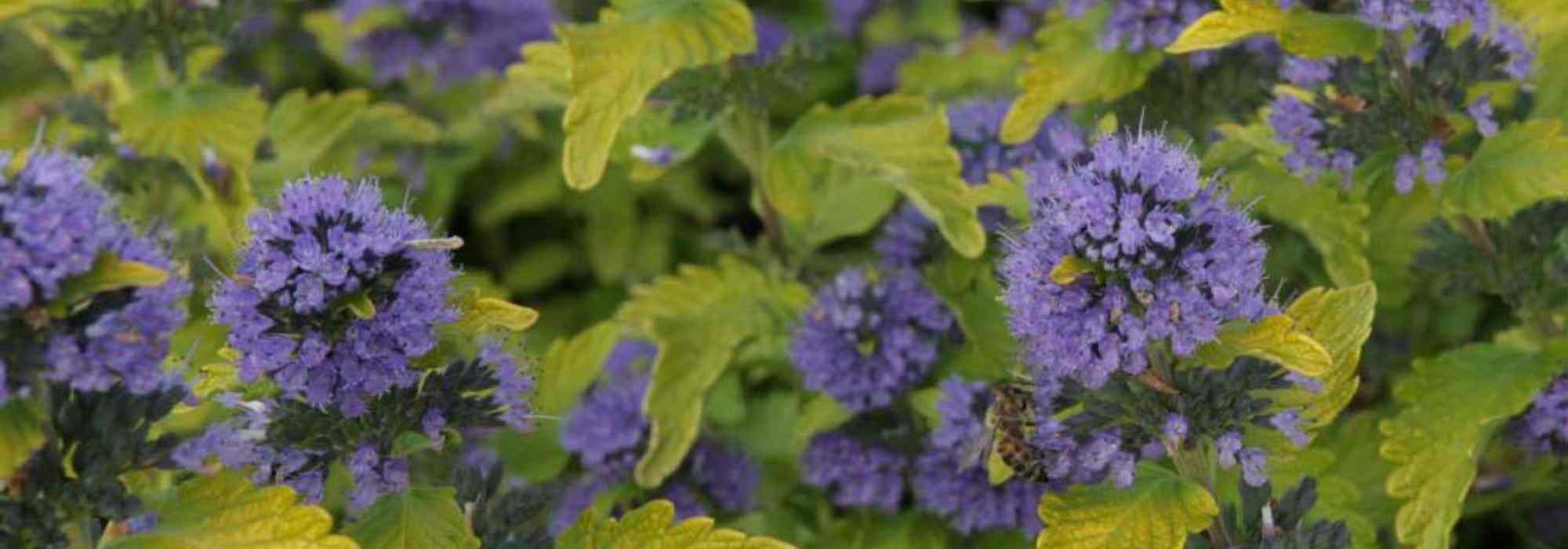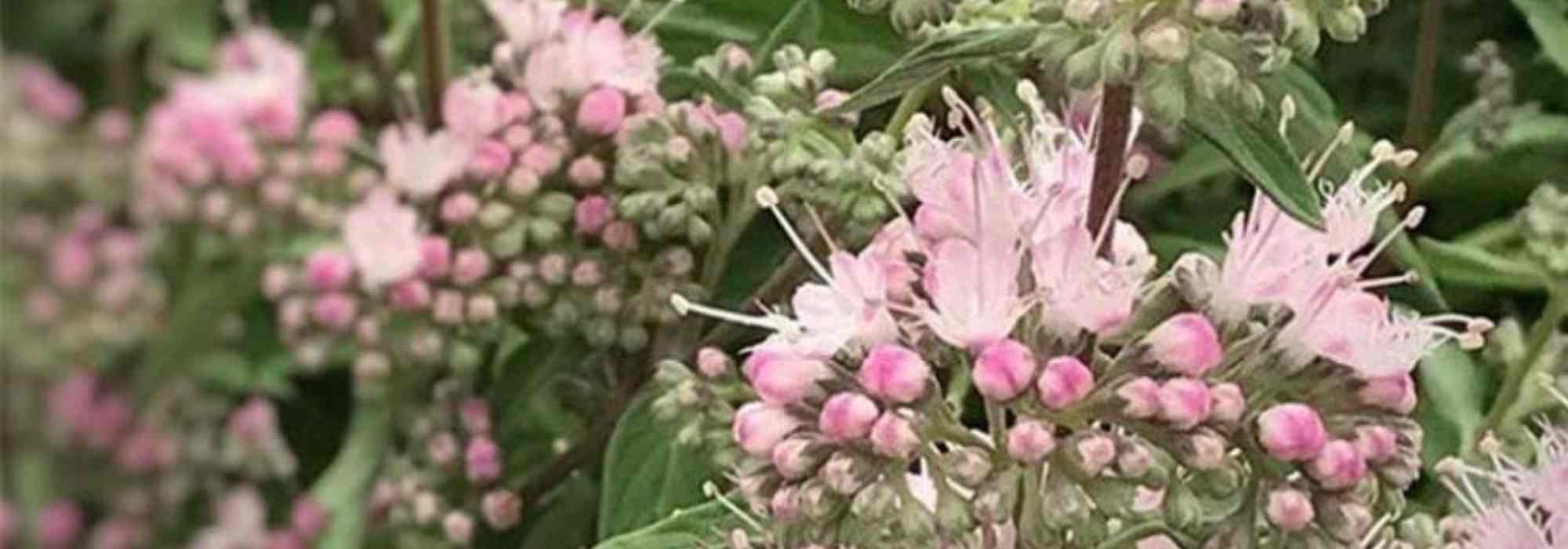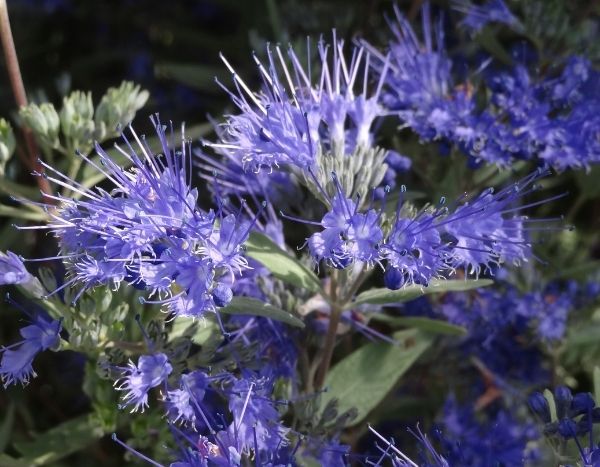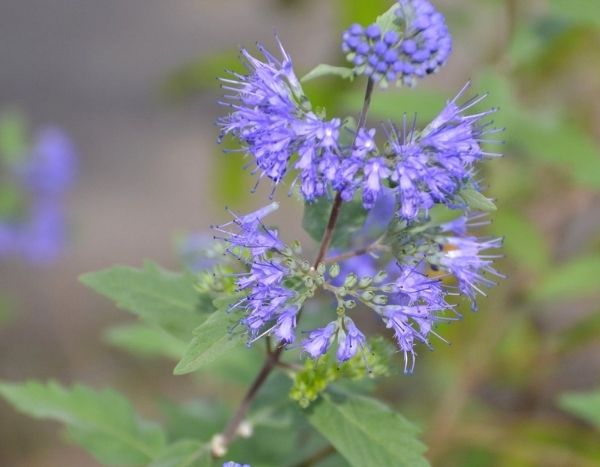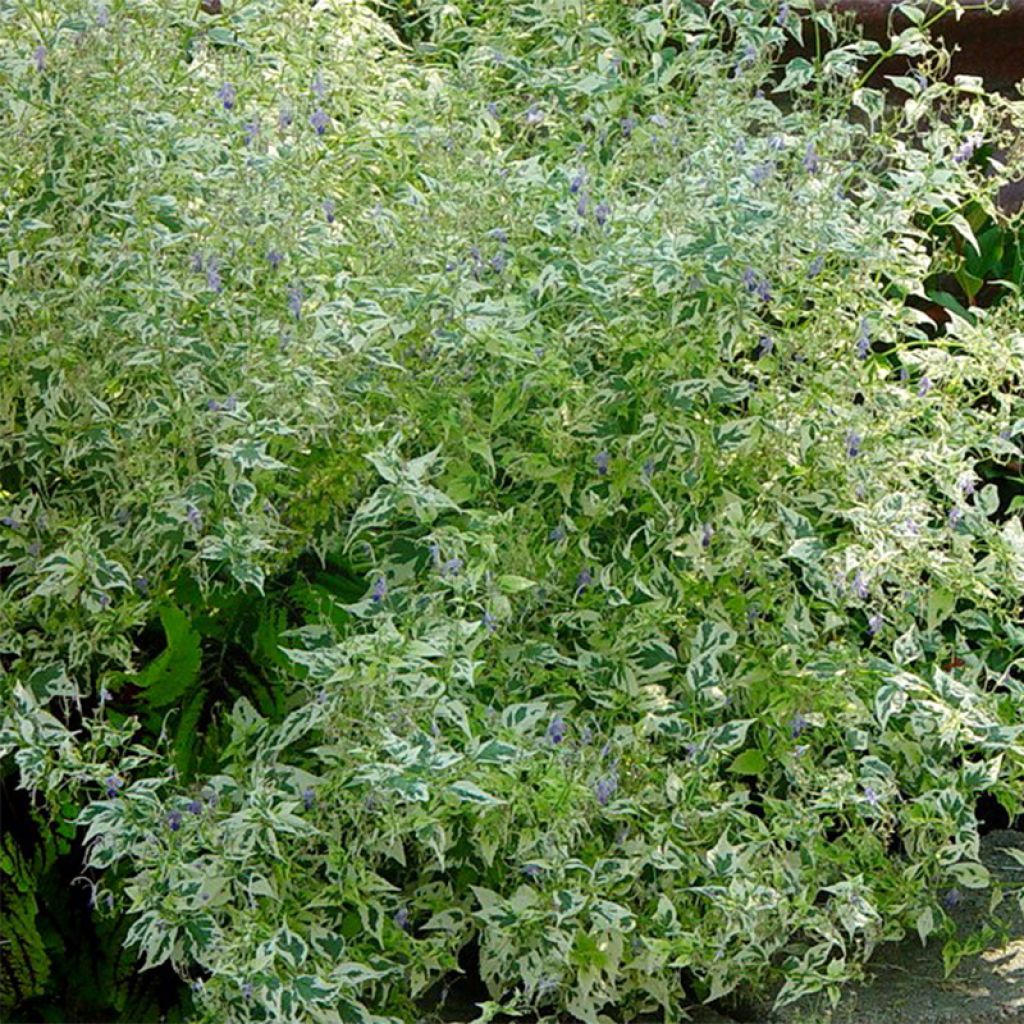

Caryopteris divaricata Electrum - Barbe bleue
Caryopteris divaricata Electrum
Caryopteris divaricata Electrum
Bluebeard, Blue Spirea, Blue Mist Shrub
This plant is superb with its very variegated foliage. It quickly reached the expected size from the year of planting. It did not flower in its first year.
Virginie V., 30/10/2017
Special offer!
Receive a €20 voucher for any order over €90 (excluding delivery costs, credit notes, and plastic-free options)!
1- Add your favorite plants to your cart.
2- Once you have reached €90, confirm your order (you can even choose the delivery date!).
3- As soon as your order is shipped, you will receive an email containing your voucher code, valid for 3 months (90 days).
Your voucher is unique and can only be used once, for any order with a minimum value of €20, excluding delivery costs.
Can be combined with other current offers, non-divisible and non-refundable.
Why not try an alternative variety in stock?
View all →This plant carries a 12 months recovery warranty
More information
We guarantee the quality of our plants for a full growing cycle, and will replace at our expense any plant that fails to recover under normal climatic and planting conditions.

Does this plant fit my garden?
Set up your Plantfit profile →
Description
Caryopteris divaricata 'Electrum', also known as Bluebeard, is a different species from other Caryopteris. The perennial bushy and compact tuft of foliage is variegated with cream. In late summer and autumn, it is covered with small infinitely precious blue flowers, topped with large curved stamens. Their white throat speckled with blue must be admired up close. Original, rare, very cold-resistant, this plant loves wild borders and sometimes thrives where least expected, in heavy soil.
Caryopteris divaricata is a recently renamed species, Tripora divaricata, and has been moved from the Verbenaceae family to the Lamiaceae family. It is native to East Asia, Japan or Nepal. 'Electrum' has a compact habit, forming a completely deciduous herbaceous tuft, 80cm (31.5in) tall, with a spread of 60cm (23.6in). Its foliage, very bright, consists of thin opposite and dentate leaves, variegated with almond green, cream, and white. It is carried by thin and slender stems. Flowering begins at the end of August and continues into September-October, consistently. The axillary flowers measure only 1 to 2cm (0.4 to 0.8in) and are densely clustered on peduncles. They are a pale blue, barely tinged with mauve, on the upper petals, and ultramarine blue on the lower, highly developed lobe. Their throat is lighter, speckled with a more intense blue-violet. Pure white stamens emerge gracefully from the heart of the flower, longer than it, and are gracefully arched towards the ground.
Caryopteris divaricata 'Electrum' is both very beautiful and very elegant. It is not a plant that will overshadow its neighbours; it likes to blend in. It brings lightness mixed with sensuality to the garden. Its variegated foliage will nicely enhance matte or dark greens in a large sunny or semi-shady border. It is an ideal plant for country gardens, cottage gardens, and natural gardens. It belongs to the strong and durable perennials, like Verbena bonariensis, Trachystemon orientalis, Symphytum 'Hidcote Blue', or even the marshmallow Althaea officinalis. It will also make a beautiful container on the terrace or balcony, allowing for a close-up view of its subtle flowering. It appreciates sun or semi-shade and soil that is not too dry in summer.
Caryopteris divaricata Electrum in pictures
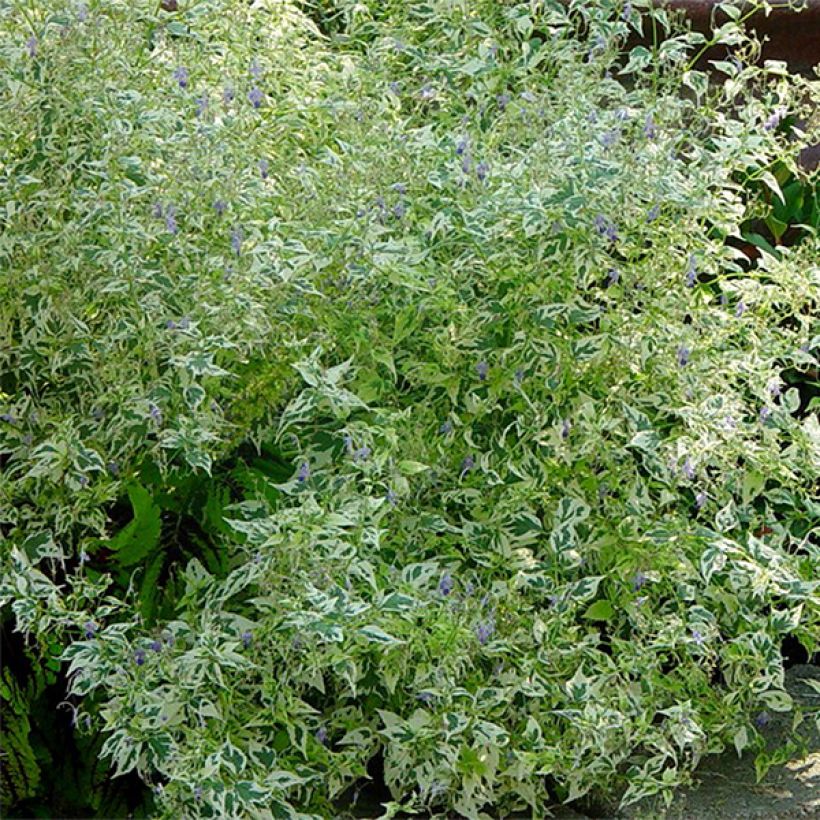

Flowering
Foliage
Plant habit
Botanical data
Caryopteris
divaricata
Electrum
Lamiaceae
Bluebeard, Blue Spirea, Blue Mist Shrub
Cultivar or hybrid
Other Caryopteris
View all →Planting and care
Planting period
Intended location
Care
Planting & care advice
-
, onOrder confirmed
Reply from on Promesse de fleurs
Haven't found what you were looking for?
Hardiness is the lowest winter temperature a plant can endure without suffering serious damage or even dying. However, hardiness is affected by location (a sheltered area, such as a patio), protection (winter cover) and soil type (hardiness is improved by well-drained soil).

Photo Sharing Terms & Conditions
In order to encourage gardeners to interact and share their experiences, Promesse de fleurs offers various media enabling content to be uploaded onto its Site - in particular via the ‘Photo sharing’ module.
The User agrees to refrain from:
- Posting any content that is illegal, prejudicial, insulting, racist, inciteful to hatred, revisionist, contrary to public decency, that infringes on privacy or on the privacy rights of third parties, in particular the publicity rights of persons and goods, intellectual property rights, or the right to privacy.
- Submitting content on behalf of a third party;
- Impersonate the identity of a third party and/or publish any personal information about a third party;
In general, the User undertakes to refrain from any unethical behaviour.
All Content (in particular text, comments, files, images, photos, videos, creative works, etc.), which may be subject to property or intellectual property rights, image or other private rights, shall remain the property of the User, subject to the limited rights granted by the terms of the licence granted by Promesse de fleurs as stated below. Users are at liberty to publish or not to publish such Content on the Site, notably via the ‘Photo Sharing’ facility, and accept that this Content shall be made public and freely accessible, notably on the Internet.
Users further acknowledge, undertake to have ,and guarantee that they hold all necessary rights and permissions to publish such material on the Site, in particular with regard to the legislation in force pertaining to any privacy, property, intellectual property, image, or contractual rights, or rights of any other nature. By publishing such Content on the Site, Users acknowledge accepting full liability as publishers of the Content within the meaning of the law, and grant Promesse de fleurs, free of charge, an inclusive, worldwide licence for the said Content for the entire duration of its publication, including all reproduction, representation, up/downloading, displaying, performing, transmission, and storage rights.
Users also grant permission for their name to be linked to the Content and accept that this link may not always be made available.
By engaging in posting material, Users consent to their Content becoming automatically accessible on the Internet, in particular on other sites and/or blogs and/or web pages of the Promesse de fleurs site, including in particular social pages and the Promesse de fleurs catalogue.
Users may secure the removal of entrusted content free of charge by issuing a simple request via our contact form.
The flowering period indicated on our website applies to countries and regions located in USDA zone 8 (France, the United Kingdom, Ireland, the Netherlands, etc.)
It will vary according to where you live:
- In zones 9 to 10 (Italy, Spain, Greece, etc.), flowering will occur about 2 to 4 weeks earlier.
- In zones 6 to 7 (Germany, Poland, Slovenia, and lower mountainous regions), flowering will be delayed by 2 to 3 weeks.
- In zone 5 (Central Europe, Scandinavia), blooming will be delayed by 3 to 5 weeks.
In temperate climates, pruning of spring-flowering shrubs (forsythia, spireas, etc.) should be done just after flowering.
Pruning of summer-flowering shrubs (Indian Lilac, Perovskia, etc.) can be done in winter or spring.
In cold regions as well as with frost-sensitive plants, avoid pruning too early when severe frosts may still occur.
The planting period indicated on our website applies to countries and regions located in USDA zone 8 (France, United Kingdom, Ireland, Netherlands).
It will vary according to where you live:
- In Mediterranean zones (Marseille, Madrid, Milan, etc.), autumn and winter are the best planting periods.
- In continental zones (Strasbourg, Munich, Vienna, etc.), delay planting by 2 to 3 weeks in spring and bring it forward by 2 to 4 weeks in autumn.
- In mountainous regions (the Alps, Pyrenees, Carpathians, etc.), it is best to plant in late spring (May-June) or late summer (August-September).
The harvesting period indicated on our website applies to countries and regions in USDA zone 8 (France, England, Ireland, the Netherlands).
In colder areas (Scandinavia, Poland, Austria...) fruit and vegetable harvests are likely to be delayed by 3-4 weeks.
In warmer areas (Italy, Spain, Greece, etc.), harvesting will probably take place earlier, depending on weather conditions.
The sowing periods indicated on our website apply to countries and regions within USDA Zone 8 (France, UK, Ireland, Netherlands).
In colder areas (Scandinavia, Poland, Austria...), delay any outdoor sowing by 3-4 weeks, or sow under glass.
In warmer climes (Italy, Spain, Greece, etc.), bring outdoor sowing forward by a few weeks.






























